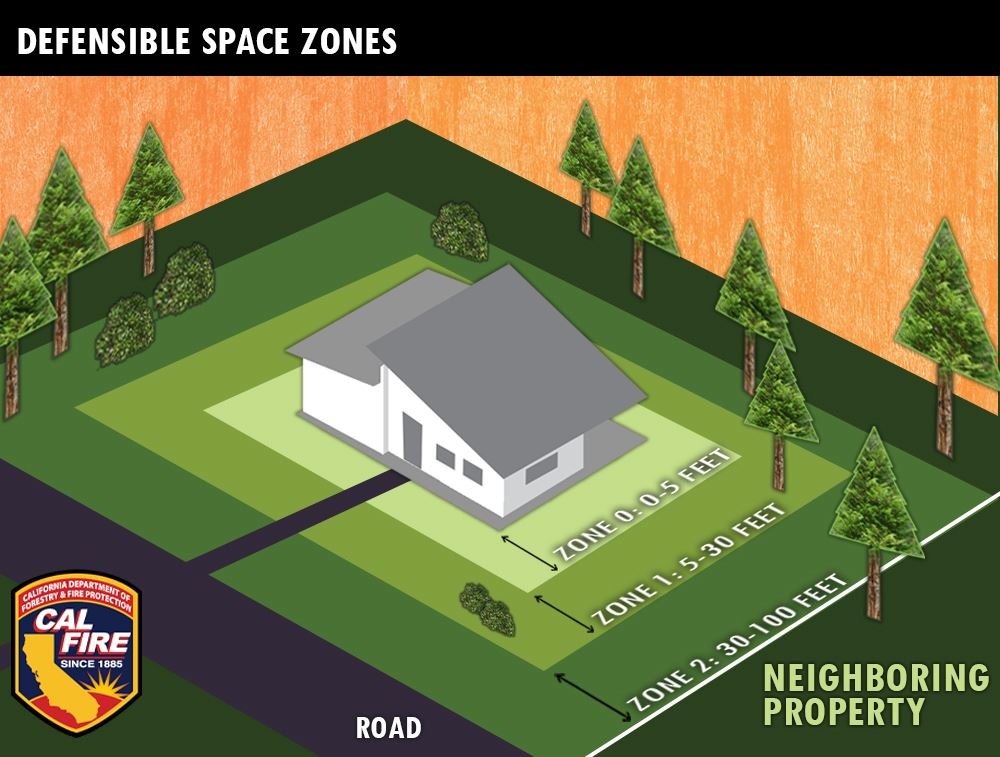What is defensible space?
Creating a defensible space around your home is a critical step in protecting your property from wildfires, especially in fire-prone areas like California. Defensible space acts as a buffer between your home and the surrounding vegetation, reducing the risk of fire spreading to your structure. At Land Revision, we are experts in mitigating fire risk to your home and follow the prescriptions by CalFire and other local and state authorities. Book us now for to assess the fire risk of your estate.
Understanding Defensible Space
Defensible space is divided into three zones, each with specific guidelines:
Zone 0: 0–5 Feet – Ember-Resistant Zone
This is the most critical zone, as embers can travel miles ahead of a wildfire and ignite materials close to your home. To protect this area:
Use non-combustible materials like gravel, pavers, or concrete for landscaping.
Remove all dead or dying plants, leaves, needles, and debris from roofs, gutters, decks, and around the base of your home.
Trim branches within 10 feet of any chimney or stovepipe outlet.
Limit combustible items such as outdoor furniture and planters on decks.
Relocate firewood and lumber piles to Zone 2.
Replace combustible fencing and gates attached to the home with non-combustible alternatives.
Consider moving garbage and recycling containers outside this zone.
Zone 1: 5–30 Feet – Lean, Clean, and Green Zone
This zone aims to reduce the intensity of any fire that approaches your home. Key actions include:
Remove all dead plants, grass, and weeds.
Clear dead or dry leaves and pine needles from your yard.
Trim trees regularly to keep branches at least 10 feet from other trees.
Create space between trees and shrubs to prevent fire from jumping between them.
Zone 2: 30–100 Feet – Reduced Fuel Zone
This zone focuses on reducing the fuel available to a wildfire. Recommendations include:
Mow grass to a maximum height of four inches
Create horizontal and vertical spacing between shrubs and trees.
Remove fallen leaves, needles, twigs, bark, cones, and small branches, allowing for a maximum depth of three inches.
Maintain a 10-foot clearance around exposed wood piles and propane tanks, down to bare mineral soil
Importance of Compliance
California law requires homeowners in fire-prone areas to maintain 100 feet of defensible space around their homes. Some counties may have stricter standards, so it's essential to check with local fire authorities for specific requirements.
Implementing these measures not only helps protect your property but also provides a safer environment for firefighters defending your home. By creating and maintaining defensible space, you're taking a proactive step in wildfire preparedness.
For more detailed information and resources, visit CAL FIRE's Defensible Space webpage.
